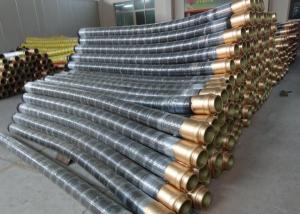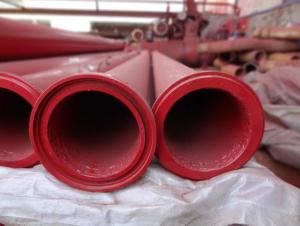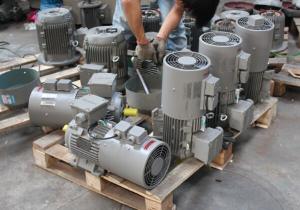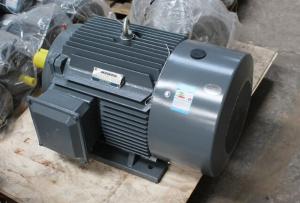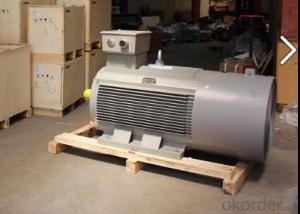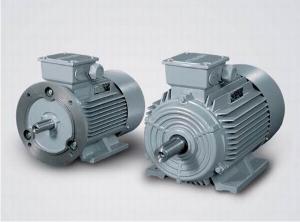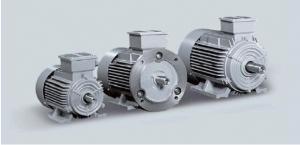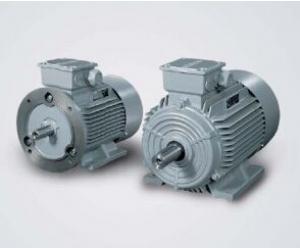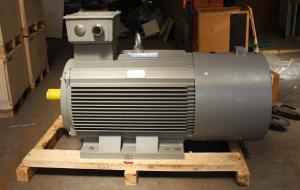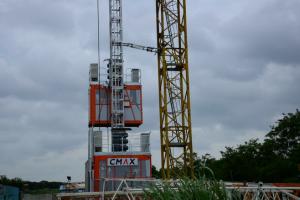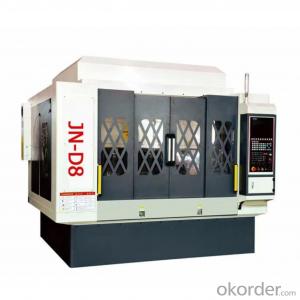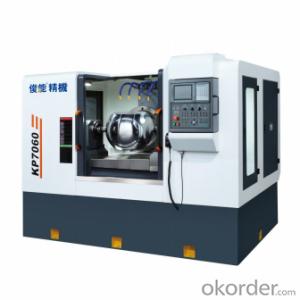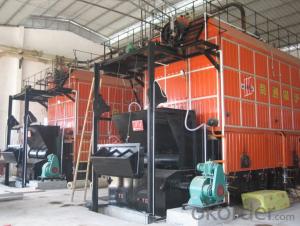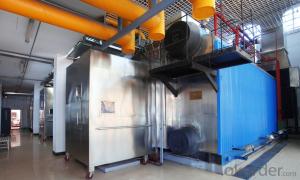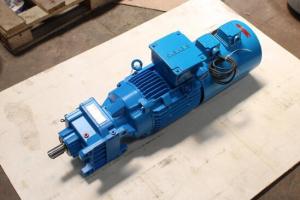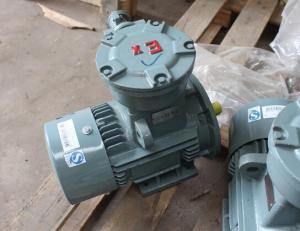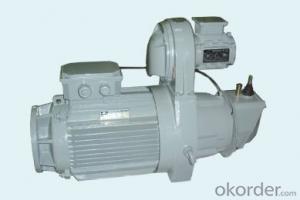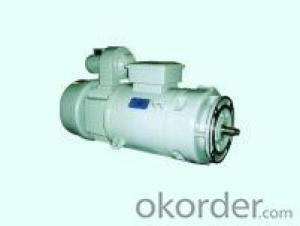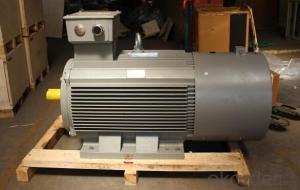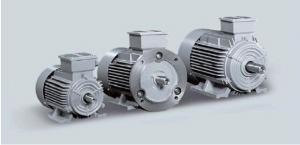YZP2(IPW54) Special frequency-changing three-phase asynchronous motor for tower crane
- Loading Port:
- China Main Port
- Payment Terms:
- TT OR LC
- Min Order Qty:
- -
- Supply Capability:
- -
OKorder Service Pledge
OKorder Financial Service
You Might Also Like
Power:
5.5-hundreds KW
Overview
YZPE2 variable-frequency three-phase asynchronous motor for lifting and metallurgy purposes is developed according to the characteristics of the
available tower crane, based on almost 10 years of experience in R&D of primary hoisting motor brake for the tower crane and metallurgy variable-frequency
motor. Lt is mainly used as a lifting mechanism of the tower crane, and also a trolley mechanism of heavy-duty crane
Features
A variable一frequency special motor is equipped, available with a wide range offrequency conversion, small starting current and big starting torque;
A thermal protection component is buried into the winding, and can be wired into motor temperature control& protection system, making the motor
operation more secure and reliable;
Strengthened inter-turn insulation is adopted in the stator winding, so the insulation reliability is higher;
Equipped with axial一flow fan or centrifugal fan, with good cooling effect and lower motor temperature rise;
Special bearing is adopted for variable一frequency motor, so it's more suitable for variable一frequency operating environment;
The rotating shaft is subject to alloy steel heat treatment, showing better mechanical strength;
The brake (fitted with special manual release device) is a de-energized brake type (national utility model patent, Patent No. ZL201120188124.9), with big
braking torque and short response time
Users’Options:
A rotary encoder can be set at the end ofthe motor as per the user demands, so a speed closed-loop control system isformed to make adjustment more reliable and accurate. The encoder model isconfirmed by the users when signing the contract
- Q:Difference between energy consumption braking of DC motor and AC motor
- Energy consumption braking of AC motor:The motor in normal operation, in order to stop quickly, not only disconnect the three-phase AC power supply, but also in the stator coil connected in the DC power supply, the DC current in the stator coil formed in the magnetic field, the rotor continues to rotate due to the inertia of cutting the magnetic field, the induced electromotive force and current formed in the rotor, the direction of rotation direction and torque motor instead, resulting in brake, the motor stops.Different torque is introduced into the rotor of the motor and different DC currents are connected in the stator of the motor, so different braking torque can be generated.Features: when the motor speed drops to zero, the braking torque will be zero, so the energy consumption braking can make the motor stop accurately
- Q:Hm, If an electrical circuit has no resistance or negligible R then shock circuit is likely to occur.....what's the matter in case of electric motor please explain
- Hi, The electrical circuit that possesses resistance are the windings of a motor.A motor has two types of windings viz. Field windings and Armature windings. See,when we talk of only resistance then it is logical to understand the theory of a dc motor only(NOT ac motor) in regards to your question. In general,the resistance of field windings is maintained HIGH by using a coil of larger number of turns made by thin copper wires as the resistance is inversely proportional to the area of cross section of the wire. This is because,the initial applied voltage to the field windings is very high and may cause to generate a large current in field circuit in case of low resistive windings.(Remember Ohm's law). This initial transient current is very damaging and so undesirable for use in the field circuit. On the other hand,the resistance of armature windings is kept LOW by using small number of turns made of copper wires of larger area of cross section. This is because the armature circuit is rotary member of the motor and has capability of self limiting the resistance in the form of BACK EMF. Even the initial value of current is very much high in armature circuit too but the use of STARTERS limit the current by grading the value of effective resistance.Once the rotor attains sufficient rpm,the generation of BACK EMF now,limits the current in the circuit and starters are removed. So,this is a misconception that motor circuits do not have resistances. HOPE IT WORKED!!!
- Q:From what I remember about AC motors, one cannot lower the voltage to slow it down- it must be the frequency that is lowered. However, I have an AC wall fan which slows down when the voltage in my house drops. Whenever a microwave or similar high-current load is on the voltage drops slightly and I always notice the fan motor slowing or speeding up when the load turns on and off. Why is it doing this? I am assuming that it is not good for the fan but seeing that it has been running this way for years it must not be that detrimental to it...
- AC motors as the name implies is run using AC/alternating current.. this is best represented by a sinusoidal graph with time in the horizontal axis and voltage or current in the vertical axis.. motors uses the current to produce power which drives whatever it is that's attached to the motor.. power is directly proportional to either voltage or current.. because of this, low voltage/current produces low power and vice versa.. this is the reason why your fan slows down when voltage drops..
- Q:My motor is designed for 40deg ambient temp with F class (Amb.40deg+105K Rise+10K Hot spot allowance) insulation. But my customer wants to use it at 50Deg. As per our spec. motor should be de-rated the max. power should be 93% of the rated power. Means customer has to reduce his application's OP torque about 7%. If my customer doesn't accept reduce the app. torque, can I go for H class (Amb.40deg+125K Rise+10K Hot spot allowance) insulation. Will the 20K additional temp. rise cushion compensate the increase of 10deg in Ambient? What will be the winding temp. according to the ambient temp rise about 10Deg (50Deg)C 20Deg C (60deg)? Pls help
- In theory the heat dissipation is linear, so an increase in ambient of 10C (aka 10K) will cause the winding temperature to increase by the same amount. Yes, you can use a higher insulation class throughout to allow the motor to run hotter. If you are not the motor manufacturer, ask the manufacturer what they would recommend.
- Q:i got this 120 volt ac with 4 wires motor and it'll go for like 5 seconds and then it'll stop spinning for about 30 seconds and then it'll spin for 5 and the process will be repeated, any ideas on why this might be happening or how to fix it?
- You have a thermal breaker in the motor. When it gets to hot it will trip and shut off. After it cools down the breaker closes and the motor starts back up. If it is heating up that fast, you have other issues, RE:too much load on the motor, bearings going, not wired correctly or maybe even the thermal breaker is weak. Most motors have a wire diagram on the plate that will indicate proper ccw or cw connections as well as the Tc or Tr which is the internal thermal breaker.
- Q:i hope that have picture of electric motor in refrigerator and more details about it.
- the administration panel or eyebrow of the refrigerator pull and verify connections are there any easy or capability to this panel if lights are blinking it fairly is a code to repair the subject
- Q:If AC input is 110V on AC speed controller, can AC Output go up to 220V? (even AC speed controller saying “voltage regulation: begin from 10V 10V-220V)
- Answer delete failed
- Q:What happens if I overdrive an AC motor while connected to the AC whether single phase or three(3) for the dif?
- What does overdrive mean? What is the rest of your question? Edit: Basically, you are connecting 2 induction motors with a different number of poles (different running speed range) in parallel electrically and physically. Before I answer, an induction motor needs to operate relatively close to the synchronous speed in order to make useful torque; if not there is a large ripple torque and the net torque is zero. In addition, the motor current will be very large if the motor speed is far different than the synchronous speed. So what will happen is that the motor with more torque capability will overpower the other one. I'm pretty sure this will cause excessive current in the smaller motor, and damage it unless some overload protection device kicks in. Don't do it, because it will not do anything useful.
- Q:Why asynchronous motor AC excitation, rather than DC excitation?
- Synchronous motor is also a kind of AC motor. Mainly used for generators, motors can also be used, generally used for larger power, speed does not require the adjustment of production machinery, such as large water pumps, air compressors and mine fans. In recent years, due to the development of permanent magnet materials and electronic technology, micro synchronous motor has been more and more widely used.One of the characteristics of synchronous motors is that the speed of n is stable, and there is a constant relationship between the stator speed and the frequency f1 of the stator currentN=60f1/p=n0The speed n of synchronous motor is the same as that of rotating magnetic field n0. The name of "synchronization" comes from here.
- Q:Can a transfer function be derived from AC Motor? Do you have any idea to solve it?
- Yes. When you switch the power on it takes a certain time for the motor to accelerate. The shaft inertia is an integration time constant, which levels off after a while, and becomes a first-order TF. The time constant of the winding can be disregarded, i.e., assumed small, relative to the inertia TC, but it also is a first-order TF, with an estimated TC of 0.1 sec. Then, there is a viscous friction TC, which can also be disregarded, unless some sort of braking is involved. Therefore, in short: rpm (s) / power-in (s) = 1 / 1 + s T s: Laplace operator T: shaft inertia time constant, in time units, = moment-of-inertia / nominal (nameplate) power The moment of inertia must include the motor shaft PLUS the inertia of the load driven by it. To determine the inertia, you?ll have to do a test, measuring the acceleration under a certain force. .
1. Manufacturer Overview |
|
|---|---|
| Location | |
| Year Established | |
| Annual Output Value | |
| Main Markets | |
| Company Certifications | |
2. Manufacturer Certificates |
|
|---|---|
| a) Certification Name | |
| Range | |
| Reference | |
| Validity Period | |
3. Manufacturer Capability |
|
|---|---|
| a)Trade Capacity | |
| Nearest Port | |
| Export Percentage | |
| No.of Employees in Trade Department | |
| Language Spoken: | |
| b)Factory Information | |
| Factory Size: | |
| No. of Production Lines | |
| Contract Manufacturing | |
| Product Price Range | |
Send your message to us
YZP2(IPW54) Special frequency-changing three-phase asynchronous motor for tower crane
- Loading Port:
- China Main Port
- Payment Terms:
- TT OR LC
- Min Order Qty:
- -
- Supply Capability:
- -
OKorder Service Pledge
OKorder Financial Service
Similar products
New products
Hot products
Hot Searches



